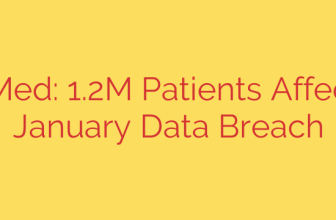
Android’s New Defense Against Hidden Malware in Images and Videos
Every day, we send and receive countless images and videos on our smartphones. These files seem harmless, but they represent a growing security risk. Sophisticated attackers have found ways to hide malicious code within the very fabric of a media file, turning a simple picture or video into a gateway for compromising your device.
In response to this escalating threat, a powerful new security feature is being integrated into the Android operating system. Known as media sanitization, this technology acts as a silent guardian, automatically neutralizing threats hidden within media files before they can ever cause harm.
What is Media Sanitization?
Think of media sanitization as a proactive security checkpoint for every image and video file your device processes. Instead of simply scanning a file for known viruses, this system takes a more fundamental approach. It deconstructs the incoming media file, carefully identifies the legitimate audio and video components, and then rebuilds a completely new, clean version of the file from scratch.
Media sanitization is the process of automatically cleaning media files by parsing them and reconstructing a new, safe version that contains only valid data. Any extraneous data, unrecognized code, or suspicious elements that don’t belong in a standard media file are simply discarded during this rebuilding process. This effectively strips out hidden malware while preserving the image or video you intended to see.
The Critical Need for Proactive Protection
The danger this technology addresses is very real. Security vulnerabilities in how devices process media have been exploited by highly advanced spyware, such as the infamous Pegasus tool. Attackers can embed malicious code within the complex structure of an image or video file, creating a “zero-click” exploit that can compromise your device without any interaction from you. You wouldn’t even need to open the file—the vulnerability could be triggered as soon as the file is received by a messaging app.
By cleaning files at the operating system level, Android removes the opportunity for this malicious code to ever run, closing a dangerous loophole that affects billions of users.
How It Works Within the Android OS
This isn’t a separate app you need to install; it’s a core enhancement to the Android platform itself. The sanitization process is integrated directly into the media framework that all apps use to handle and display images and videos.
This security feature is built directly into the Android operating system, automatically intercepting and rebuilding media files before they can be processed by other applications. Google’s engineers have focused heavily on performance to ensure this process happens instantaneously and invisibly, so you won’t notice any delay when opening a photo or playing a video. The system is designed to be both highly effective and completely seamless.
This protection is being applied to a wide range of common media formats, offering broad defense against potential exploits.
Who Is Protected by This New Feature?
One of the most significant aspects of this rollout is its wide availability. In a major move to protect the entire ecosystem, this advanced security is not limited to the latest flagship phones. This critical security enhancement is being rolled out not just for new devices but is also being backported to protect devices running Android 11 and newer. This means hundreds of millions of existing devices will receive this vital protection through regular security updates.
Actionable Security Tips for Your Android Device
While media sanitization provides a powerful layer of built-in defense, maintaining good security habits is still essential. Here are a few tips to keep your device safe:
- Keep Your System Updated: The single most important thing you can do is install system and security updates as soon as they become available. Features like media sanitization are delivered through these updates.
- Download Apps from Official Sources: Stick to the Google Play Store for all your app downloads to minimize the risk of installing malicious software.
- Be Mindful of Permissions: When you install a new app, review the permissions it requests. If an app asks for access to data it doesn’t need, consider it a red flag.
- Exercise Caution with Links and Attachments: Even with advanced protections, it’s wise to be wary of unsolicited files and links, especially from unknown contacts.
By integrating media sanitization directly into the operating system, Android is taking a significant and proactive step toward neutralizing a complex class of threats, making the digital world safer for everyone.
Source: https://cloud.google.com/blog/products/identity-security/the-future-of-media-sanitization-at-google/








